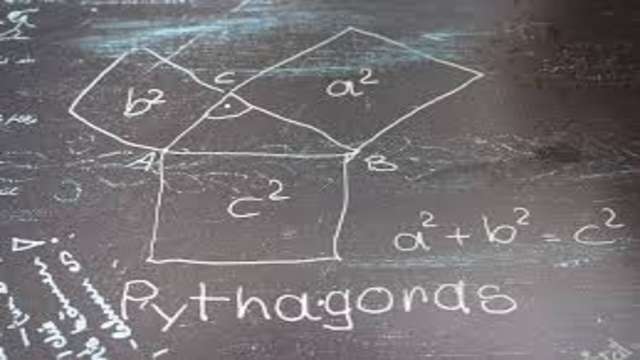Integration special rational functions
1.विशेष परिमेय फलनों का समाकलन (Integration special rational functions, Integration of special form of rational functions)-
विशेष परिमेय फलनों का समाकलन (Integration special rational functions, Integration of special form of rational functions) में ऐसे परिमेय फलन होते हैं जिनमें बहुपद को पूर्ण वर्ग बनाकर मानक रूप में परिवर्तित किया जाता है।फिर मानक रूप का समाकलन कर लिया जाता है।
यदि अंश का बहुपद हर के बहुपद से अधिक घात का है तो पहले हर का अंश में भाग देते हैं। पश्चात् शेष बहुपद में हर को पूर्ण वर्ग बनाकर मानक रूप में परिवर्तित किया जाता है।
आपको यह जानकारी रोचक व ज्ञानवर्धक लगे तो अपने मित्रों के साथ इस गणित के आर्टिकल को शेयर करें ।यदि आप इस वेबसाइट पर पहली बार आए हैं तो वेबसाइट को फॉलो करें और ईमेल सब्सक्रिप्शन को भी फॉलो करें जिससे नए आर्टिकल का नोटिफिकेशन आपको मिल सके ।यदि आर्टिकल पसन्द आए तो अपने मित्रों के साथ शेयर और लाईक करें जिससे वे भी लाभ उठाए ।आपकी कोई समस्या हो या कोई सुझाव देना चाहते हैं तो कमेंट करके बताएं। इस आर्टिकल को पूरा पढ़ें।
Also Read This Article:-Integration resolving partial fraction
2.विशेष परिमेय फलनों का समाकलन (Integration special rational functions, Integration of special form of rational functions) पर आधारित सवाल-
Question-1.\frac { x }{ { x }^{ 4 }+2{ x }^{ 2 }+5 }
Solution- I=\int { \frac { x }{ { x }^{ 4 }+2{ x }^{ 2 }+5 } dx } \\ { x }^{ 2 }=t\quad \quad \Rightarrow 2xdx=dt\\ I=\frac { 1 }{ 2 } \int { \frac { dt }{ { t }^{ 2 }+2t+5 } } \\ I=\frac { 1 }{ 2 } \int { \frac { dt }{ { t }^{ 2 }+2t+1+4 } } \\ I=\frac { 1 }{ 2 } \int { \frac { dt }{ { (t+1) }^{ 2 }+{ 2 }^{ 2 } } } \\ I=\frac { 1 }{ 2 } .\frac { 1 }{ 2 } \tan ^{ -1 }{ \frac { (t+1) }{ 2 } } +c\\ \qquad =\frac { 1 }{ 4 } \tan ^{ -1 }{ \frac { ({ x }^{ 2 }+1) }{ 2 } }
Question-2. \frac { \cos { x } }{ \sin ^{ 2 }{ x } +4\sin { x } +5 }
Solution– I=\int { \frac { \cos { x } }{ \sin ^{ 2 }{ x } +4\sin { x } +5 } } \\ \sin { x } =t\quad \quad \Rightarrow \cos { x } dx=dt\\ I=\int { \frac { dt }{ { t }^{ 2 }+4t+5 } } \\ I=\int { \frac { dt }{ { t }^{ 2 }+4t+4+1 } } \\ I=\int { \frac { dt }{ { (t+2) }^{ 2 }+{ 1 }^{ 2 } } } \\ I=\tan ^{ -1 }{ (t+2) } +c\\ I=\tan ^{ -1 }{ (2+\sin { x } ) } +c
Question-3.\frac { 1 }{ 9{ x }^{ 2 }+2x+8 }
Solution– I=\int { \frac { dx }{ 9{ x }^{ 2 }+2x+8 } } \\ I=\frac { 1 }{ 9 } \int { \frac { dx }{ { x }^{ 2 }+\frac { 2 }{ 9 } x+\frac { 8 }{ 9 } } } \\ I=\frac { 1 }{ 9 } \int { \frac { dx }{ { x }^{ 2 }+\frac { 2 }{ 9 } x+{ (\frac { 1 }{ 9 } ) }^{ 2 }+\frac { 8 }{ 9 } -\frac { 1 }{ 81 } } } \\ I=\frac { 1 }{ 9 } \int { \frac { dx }{ { (x+\frac { 1 }{ 9 } ) }^{ 2 }+{ (\frac { \sqrt { 71 } }{ 9 } ) }^{ 2 } } } \\ I=\frac { 1 }{ 9 } .\frac { 1 }{ \frac { \sqrt { 71 } }{ 9 } } \tan ^{ -1 }{ \left( \frac { x+\frac { 1 }{ 9 } }{ \frac { \sqrt { 71 } }{ 9 } } \right) } +c\\ I=\frac { 1 }{ \sqrt { 71 } } \tan ^{ -1 }{ \left( \frac { 9x+1 }{ \sqrt { 71 } } \right) } +c
Question-4.\int { \frac { dx }{ 9{ x }^{ 2 }-12x+8 } }
Solution–I=\int { \frac { dx }{ 9{ x }^{ 2 }-12x+8 } } \\ I=\frac { 1 }{ 9 } \int { \frac { dx }{ { x }^{ 2 }-\frac { 4 }{ 3 } x+\frac { 8 }{ 9 } } } \\ I=\frac { 1 }{ 9 } \int { \frac { dx }{ { x }^{ 2 }-\frac { 4 }{ 3 } x+{ (\frac { 2 }{ 3 } ) }^{ 2 }+\frac { 8 }{ 9 } -{ (\frac { 2 }{ 3 } ) }^{ 2 } } } \\ I=\frac { 1 }{ 9 } \int { \frac { dx }{ { (x-\frac { 2 }{ 3 } ) }^{ 2 }+\frac { 8 }{ 9 } -\frac { 4 }{ 9 } } } \\ I=\frac { 1 }{ 9 } .\frac { 1 }{ \frac { 2 }{ 3 } } \tan ^{ -1 }{ (\frac { x-\frac { 2 }{ 3 } }{ \frac { 2 }{ 3 } } ) } +c\\ I=\frac { 1 }{ 6 } \tan ^{ -1 }{ (\frac { 3x-2 }{ 2 } ) } +c
Question-5.\frac { 3x+1 }{ 2{ x }^{ 2 }+x+1 }
Solution–I=\int { \frac { 3x+1 }{ 2{ x }^{ 2 }+x+1 } dx } \\ 3x+1=A\frac { d }{ dx } (2{ x }^{ 2 }+x+1)+B\\ 3x+1=A(4x+1)+B\\ 3x+1=4Ax+A+B
दोनों पक्षों की तुलना करने पर-
\Rightarrow 4A=3\Rightarrow A=\frac { 3 }{ 4 } \\ A+B=1\Rightarrow \frac { 3 }{ 4 } +B=1\\ \Rightarrow B=\frac { 1 }{ 4 } \\ I=\frac { 3 }{ 4 } \int { \left( \frac { 4x+1 }{ 2{ x }^{ 2 }+x+1 } +\frac { 1 }{ 4 } \frac { 1 }{ 2{ x }^{ 2 }+x+1 } \right) dx } \\ I=\frac { 3 }{ 4 } \int { \frac { 4x+1 }{ 2{ x }^{ 2 }+x+1 } dx } +\frac { 1 }{ 4 } \int { \frac { 1 }{ 2{ x }^{ 2 }+x+1 } dx } \\ I={ I }_{ 1 }+{ I }_{ 2 }.....(1)\\ { I }_{ 1 }=\frac { 3 }{ 4 } \int { \frac { 4x+1 }{ 2{ x }^{ 2 }+x+1 } dx } \\ put\quad 2{ x }^{ 2 }+x+1=t\\ \Rightarrow \left( 4x+1 \right) dx=dt\\ { I }_{ 1 }=\frac { 3 }{ 4 } \int { \frac { dt }{ t } } \\ { I }_{ 1 }=\frac { 3 }{ 4 } \log { t } +{ c }_{ 1 }\\ { I }_{ 1 }=\frac { 3 }{ 4 } \log { \left( 2{ x }^{ 2 }+x+1 \right) } +{ c }_{ 1 }\\ { I }_{ 2 }=\frac { 1 }{ 4 } \int { \frac { 1 }{ 2{ x }^{ 2 }+x+1 } dx } \\ { I }_{ 2 }=\frac { 1 }{ 8 } \int { \frac { 1 }{ { x }^{ 2 }+\frac { x }{ 2 } +\frac { 1 }{ 2 } } dx } \\ =\frac { 1 }{ 8 } \int { \frac { 1 }{ { x }^{ 2 }+\frac { x }{ 2 } +{ \left( \frac { 1 }{ 4 } \right) }^{ 2 }+\frac { 1 }{ 2 } -{ \left( \frac { 1 }{ 4 } \right) }^{ 2 } } dx } \\ =\frac { 1 }{ 8 } \int { \frac { 1 }{ { \left( x+\frac { 1 }{ 4 } \right) }^{ 2 }+\frac { 1 }{ 2 } -\frac { 1 }{ 16 } } dx } \\ =\frac { 1 }{ 8 } \int { \frac { 1 }{ { \left( x+\frac { 1 }{ 4 } \right) }^{ 2 }+{ \left( \frac { \sqrt { 7 } }{ 4 } \right) }^{ 2 } } dx } \\ =\frac { 1 }{ 8 } .\frac { 1 }{ \frac { \sqrt { 7 } }{ 4 } } \tan ^{ -1 }{ \left( \frac { x+\frac { 1 }{ 4 } }{ \frac { \sqrt { 7 } }{ 4 } } \right) } +{ c }_{ 2 }\\ =\frac { 1 }{ 2\sqrt { 7 } } \tan ^{ -1 }{ \left( \frac { 4x+1 }{ \sqrt { 7 } } \right) } +{ c }_{ 2 }
{ I }_{ 1 } व { I }_{ 2 } के मान (1) में रखने पर-
I=\frac { 3 }{ 4 } \log { \left( 2{ x }^{ 2 }+x+1 \right) } +\frac { 1 }{ 2\sqrt { 7 } } \tan ^{ -1 }{ \left( \frac { 4x+1 }{ \sqrt { 7 } } \right) } +c
Question-6.\frac { { x }^{ 3 } }{ { x }^{ 2 }+x+1 }
Solution–I=\int { \frac { { x }^{ 3 } }{ { x }^{ 2 }+x+1 } dx }
Divide :-
| x-1 | |
| { x }^{ 2 }+x+1 | \quad { x }^{ 3 }\\ \quad { x }^{ 3 }\quad +{ x }^{ 2 }\quad +x\\ -\quad \quad \quad -\quad \quad \quad - |
| -{ x }^{ 2 }\quad -x\\ -{ x }^{ 2 }\quad -x\quad -1\\ +\quad \quad +\quad \quad + | |
| 1 |
I=\int { \left( x-1+\frac { 1 }{ { x }^{ 2 }+x+1 } \right) dx } \\ I=\int { x } dx-\int { 1 } dx+\int { \frac { 1 }{ { x }^{ 2 }+x+1 } dx } \\ I=\frac { { x }^{ 2 } }{ 2 } -x+\int { \frac { 1 }{ { x }^{ 2 }+x+{ \left( \frac { 1 }{ 2 } \right) }^{ 2 }+1-{ \left( \frac { 1 }{ 2 } \right) }^{ 2 } } } dx\\ I=\frac { { x }^{ 2 } }{ 2 } -x+\int { \frac { dx }{ { \left( x+\frac { 1 }{ 2 } \right) }^{ 2 }+{ \left( \frac { \sqrt { 3 } }{ 2 } \right) }^{ 2 } } } dx\\ I=\frac { { x }^{ 2 } }{ 2 } -x+\frac { 1 }{ \frac { \sqrt { 3 } }{ 2 } } \tan ^{ -1 }{ \left( \frac { x+\frac { 1 }{ 2 } }{ \frac { \sqrt { 3 } }{ 2 } } \right) } +c\\ I=\frac { { x }^{ 2 } }{ 2 } -x+\frac { 2 }{ \sqrt { 3 } } \tan ^{ -1 }{ \left( \frac { 2x+1 }{ \sqrt { 3 } } \right) } +c
Question-7.\frac { \left( 3sinx-2 \right) cosx }{ 5-\cos ^{ 2 }{ x } -4sinx }
Solution–I=\int { \frac { \left( 3sinx-2 \right) cosx }{ 5-\cos ^{ 2 }{ x } -4sinx } dx } \\ I=\int { \frac { \left( 3sinx-2 \right) cosx }{ 5-\left( 1-\sin ^{ 2 }{ x } \right) -4sinx } dx } \\ =\int { \frac { \left( 3sinx-2 \right) cosx }{ 5-1+\sin ^{ 2 }{ x } -4sinx } dx } \\ =\int { \frac { \left( 3sinx-2 \right) cosx }{ 4+\sin ^{ 2 }{ x } -4sinx } dx } \\ put\quad sinx=t\Rightarrow \quad cosxdx=dt\\ I=\int { \frac { \left( 3t-2 \right) }{ 4+{ t }^{ 2 }-4t } } dt\\ 3t-2=A\frac { d }{ dt } \left( 4+{ t }^{ 2 }-4t \right) +B\\ \Rightarrow 3t-2=A\left( 2{ t }-4 \right) +B\\ \Rightarrow 3t-2=2At-4A+B
दोनों पक्षों की तुलना करने पर-
\Rightarrow 2A=3\Rightarrow A=\frac { 3 }{ 2 } \\ -4A+B=-2\\ \Rightarrow B=-2+6\\ \Rightarrow B=4\\ I=\int { \left( \frac { 3 }{ 2 } \frac { \left( 2t-4 \right) }{ { t }^{ 2 }-4t+4 } +\frac { 4 }{ { t }^{ 2 }-4t+4 } \right) } dt\\ I=\frac { 3 }{ 2 } \int { \frac { \left( 2t-4 \right) }{ { t }^{ 2 }-4t+4 } dt } +4\int { \frac { 1 }{ { t }^{ 2 }-4t+4 } dt } \\ I={ I }_{ 1 }+{ I }_{ 2 }...(1)\\ { I }_{ 1 }=\frac { 3 }{ 2 } \int { \frac { \left( 2t-4 \right) }{ { t }^{ 2 }-4t+4 } dt } \\ put\quad { t }^{ 2 }-4t+4=u\\ \left( 2t-4 \right) dt=du\\ { I }_{ 1 }=\frac { 3 }{ 2 } \int { \frac { 1 }{ u } du } \\ { I }_{ 1 }=\frac { 3 }{ 2 } \log { u } +{ c }_{ 1 }\\ { I }_{ 1 }=\frac { 3 }{ 2 } \log { \left( { t }^{ 2 }-4t+4 \right) } +{ c }_{ 1 }\\ { I }_{ 1 }=\frac { 3 }{ 2 } \log { \left( { sin }^{ 2 }x-4sinx+4 \right) } +{ c }_{ 1 }\\ { I }_{ 2 }=4\int { \frac { 1 }{ { t }^{ 2 }-4t+4 } dt } \\ { I }_{ 2 }=4\int { \frac { 1 }{ { \left( t-2 \right) }^{ 2 } } } dt\\ { I }_{ 2 }=-\frac { 4 }{ { \left( t-2 \right) }^{ 2 } } +{ c }_{ 2 }\\ { I }_{ 2 }=-\frac { 4 }{ t-2 } +{ c }_{ 2 }\\ { I }_{ 2 }=-\frac { 4 }{ sinx-2 } +{ c }_{ 2 }\\ { I }_{ 2 }=\frac { 4 }{ 2-sinx } +{ c }_{ 2 }
व के मान ( 1) में रखने पर-
I=\frac { 3 }{ 2 } \log { \left( { sin }^{ 2 }x-4sinx+4 \right) } +\frac { 4 }{ 2-sinx } +c
उपर्युक्त सवालों के हल द्वारा विशेष परिमेय फलनों का समाकलन (Integration special rational functions, Integration of special form of rational functions), को आसानी से समझा जा सकता है।
3.परिमेय फलनों के निरूपण क्या हैं? (What are the representations of rational functions?)-
एक परिमेय फलन एक ऐसा फ़ंक्शन है जो एक भिन्न है और इसका गुणधर्म है कि इसके अंश और हर दोनों बहुपद हैं।दूसरे शब्दों में, R (x) एक परिमेय फलन है यदि R (x) = p (x) / q (x) जहां p (x) और q (x) दोनों बहुपद हैं।
4.समाकलन का महत्व क्या है? (What is the significance of integration?)-
समाकलन का उपयोग क्षेत्रफलों, आयतनों, केंद्रीय बिंदुओं और कई उपयोगी चीजों को खोजने के लिए किया जा सकता है।लेकिन एक फ़ंक्शन की वक्र के तहत क्षेत्रफल को खोजने के साथ शुरू करना सबसे आसान है।
5.तीन समाकलन विधियाँ क्या हैं? (What are the three integration methods?)-
समाकलन के विभिन्न तरीकों में शामिल हैं: प्रतिस्थापन द्वारा समाकलन।खण्डश: समाकलन।त्रिकोणमितीय सर्वसमिका का उपयोग कर एकीकरण।
6. आप कैसे समाकलन करते हैं?(How do you integrate?)-
एक “S” आकार का प्रतीक समाकल के अभिप्रेत के लिए प्रयोग किया जाता है, और dx को समाकल करने वाले पदों के अंत में लिखा जाता है, जिसका अर्थ है “x के सापेक्ष में”। यह वही “dx” है जो dx/ dx में दिखाई देता है।एक पद का समाकलन करने के लिए, इसकी घात को 1 से बढ़ाएं और इस आंकड़े से विभाजित करें।
7.आप अनुचित परिमेय फलनों को कैसे विभाजित करते हैं? (How do you divide improper rational functions?)-
अनुचित तर्कसंगत कार्य और लंबी श्रेणी
यदि अंश P (x) के पास हर की Q(x) की घात से अधिक या उसके बराबर की घात है, तो परिमेय फ़ंक्शन P (x)/Q (x) को अनुचित कहा जाता है।इस मामले में, हम बहुपद के शेष के साथ बहुपद के रूप में लिखने के लिए बहुपद के लंबे विभाजन का उपयोग करते हैं।
8.आंशिक भिन्नों में वियोजन द्वारा समाकलन (integration of rational functions by partial fractions)-
आंशिक भिन्नों द्वारा समाकलन: हम जानते हैं कि एक परिमेय फलन दो बहुपद p (x) / Q (x) का अनुपात है, जहाँ Q (x)≠ 0।अब, यदि P (x) की घात Q(x) से कम है तो यह एक उचित भिन्न है, अन्यथा यह एक अनुचित भिन्न है।
आंशिक भिन्नों में वियोजन द्वारा समाकलन के लिए हम आर्टिकल पोस्ट कर चुके हैं अतः आंशिक भिन्नों द्वारा समाकलन को समझने के लिए आपको उस आर्टिकल को पढ़ना चाहिए।
उपर्युक्त सवालों के हल और प्रश्नों के उत्तर द्वारा विशेष परिमेय फलनों का समाकलन (Integration special rational functions, Integration of special form of rational functions) को आसानी से समझा जा सकता।
Also Read This Article:-Differential equation in which variables can separate
| No. | Social Media | Url |
|---|---|---|
| 1. | click here | |
| 2. | you tube | click here |
| 3. | click here | |
| 4. | click here | |
| 5. | click here | |
| 6. | Facebook Page | click here |







